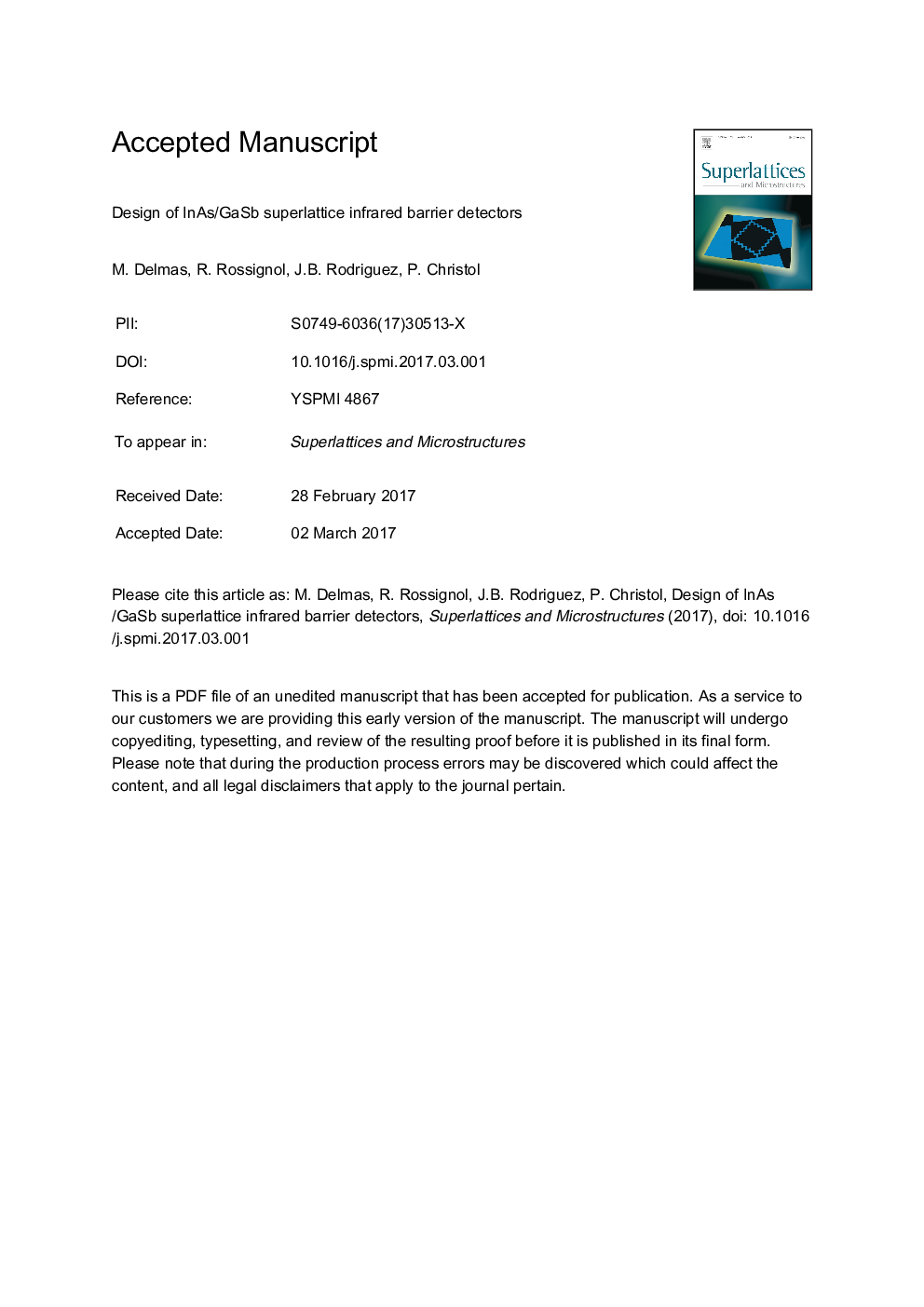| Article ID | Journal | Published Year | Pages | File Type |
|---|---|---|---|---|
| 7940850 | Superlattices and Microstructures | 2017 | 36 Pages |
Abstract
Design of InAs/GaSb type-II superlattice (T2SL) infrared barrier detectors is theoretically investigated. Each part of the barrier structures is studied in order to achieve optimal device operation at 150 K and 77 K, in the midwave and longwave infrared domain, respectively. Whatever the spectral domain, nBp structure with a p-type absorbing zone and an n-type contact layer is found to be the most favourable detector architecture allowing a reduction of the dark-current associated with generation-recombination processes. The nBp structures are then compared to pin photodiodes. The MWIR nBp detector with 5 μm cut-off wavelength can operate up to 120 K, resulting in an improvement of 20 K on the operating temperature compared to the pin device. The dark-current density of the LWIR nBp device at 77 K is expected to be as low as 3.5 Ã 10â4 A/cm2 at 50 mV reverse bias, more than one decade lower than the usual T2SL photodiode. This result, for a device having cut-off wavelength at 12 μm, is at the state of the art compared to the well-known MCT 'rule 07'.
Related Topics
Physical Sciences and Engineering
Materials Science
Electronic, Optical and Magnetic Materials
Authors
M. Delmas, R. Rossignol, J.B. Rodriguez, P. Christol,
